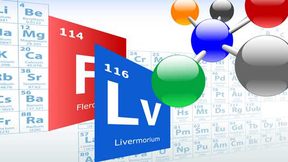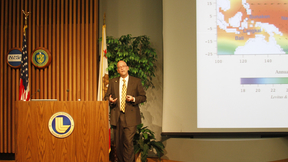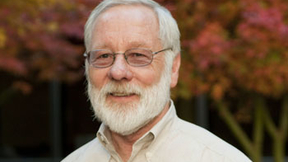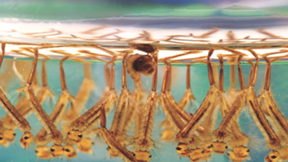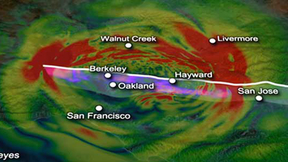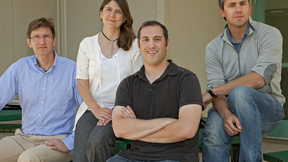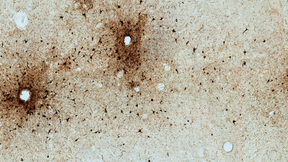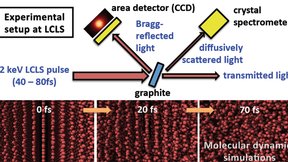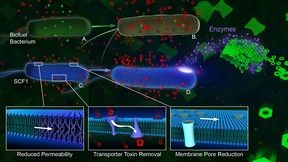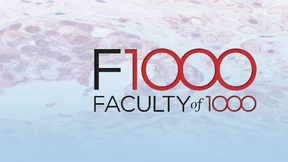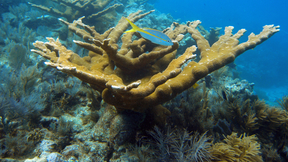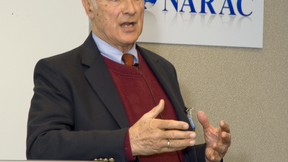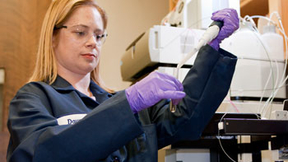Back
WHO: Lawrence Livermore National Laboratory (LLNL) and the Livermore Valley Joint Unified School District are teaming up to give students the opportunity to talk with astronauts aboard the International Space Station. WHAT: After submitting an application to NASA's education program, Livermore's Junction Avenue School was selected to host an in-flight education downlink,…
The extinction of several species of lemurs has had a profound effect on the lemurs of today. In a new study appearing in the Proceedings of the Royal Society B, researchers have found that the extinction of at least 17 species of lemurs during the last 2,000 years in Madagascar has helped determine where today's lemurs are living and breeding. The study may provide…
The International Union of Pure and Applied Chemistry (IUPAC) today officially approved new names for elements 114 and 116, the latest heavy elements to be added to the periodic table. Scientists of the Lawrence Livermore National Laboratory (LLNL)-Dubna collaboration proposed the names as Flerovium for element 114, with the symbol Fl, and Livermorium for element 116, with…
Climate change and the carbon cycle are tied so closely that geochemist Tom Guilderson can study an isotope of carbon and find out how the climate has varied in the past, how rapidly it changed and the external and internal factors that may have affected it. That was the subject of Guilderson's talk "Radiocarbon: Chronometer and Geochemical Tracer of the Carbon Cycle,"…
Lynn Seppala has been named a senior member of the Optical Society of America (OSA), an international society for optics and photonics scientists, engineers, educators and business leaders. Senior membership status recognizes members with more than 10 years of significant experience and professional accomplishments or service in their fields. Seppala, a senior optical…
The current method of removing the greenhouse gas carbon dioxide (CO2) from the flues of coal-fired power plants uses so much energy that no one bothers to use it. So says Roger Aines, principal investigator for a team that has developed an entirely new catalyst for separating out and capturing CO2, one that mimics a naturally occurring catalyst operating in our lungs…
Lawrence Livermore National Laboratory seismologists will be on hand Wednesday at the media premiere of the California Academy of Sciences' new show, "Earthquake: Evidence of a Restless Planet." "Earthquake" is a new planetarium show and major exhibit that will open to the public on May 26. The show will launch visitors on a tour through space and time -- flying over the…
LIVERMORE, Calif. -- Four Lawrence Livermore National Laboratory scientists have earned $10 million in funding through the Department of Energy Office of Science Early Career Research Program (ECRP). "Early career" is defined as principal investigators (PIs) who are within 10 years of receiving a doctorate and are either untenured assistant professors on the tenure track,…
In an advance that may someday provide health benefits for soldiers and athletes, a team of researchers has discovered a mechanism that could be the cause of traumatic brain injuries (TBI) in blast-exposed soldiers. The breakthrough study, published today in the journal Science Translational Medicine , finds that the brain injuries suffered by soldiers from improvised…
For the first time, scientists have seen an X-ray-irradiated mineral go to two different states of matter in about 40 femtoseconds (a femtosecond is one quadrillionth of a second). Using the Linac Coherent Light Source (LCLS) X-ray Free-Electron Laser (XFEL) at SLAC National Accelerator Laboratory at Stanford, Stefan Hau-Riege of Lawrence Livermore National Laboratory and…
By deciphering the makeup of a bacterium found in the soil of a tropical rain forest, scientists may have a better understanding of how to more efficiently produce biofuels. The production of liquid fuels derived from plant biomass offers a promising technology for reducing greenhouse gas emissions and dependence on fossil fuels. While sugars stored within the plant cell…
A recent paper coauthored by Bioscience & Biotechnology Division researchers Nicole Collette and Gaby Loots has been evaluated and selected by the Faculty of 1000 (F1000). This places the work in the top 2 percent of published articles in biology and medicine. The paper was given a F1000 evaluation score of 10, the highest possible score, signifying a paper of…
A clear change in salinity has been detected in the world's oceans, signaling shifts and acceleration in the global rainfall and evaporation cycle tied directly to climate change. In a paper published Friday (April 27) in the journal Science , Australian scientists from the Commonwealth Scientific and Industrial Research Organisation (CSIRO) and Lawrence Livermore National…
The breakdown of Caribbean coral reef systems predates coral bleaching and disease linked to human-induced climate change. Researchers from the Scripps Institution of Oceanography at UC San Diego and Lawrence Livermore National Laboratory reconstructed a timeline of historical change in coral reefs near Bocas del Toro in Panama and discovered that damage to the area was…
Nuclear reaction cross sections are important for a variety of applications in the areas of astrophysics, nuclear energy, and national security. When these cross sections cannot be measured directly or predicted reliably, it becomes necessary to develop indirect methods for determining the relevant reaction rates, such as the surrogate nuclear reactions approach. This work…
The Laboratory was recently featured on NOVA's "Hunting the Elements," a two-hour special from the producers of the "Making Stuff" series hosted by David Pogue, technology correspondent of The New York Times . Pogue spins viewers through the world of weird, extreme chemistry: the strongest acids, the deadliest poisons, the universe's most abundant elements, and the rarest…
What is power, and how can the United States effectively project power in the information or cyber age? This was the focus of a recent lecture by Joseph Nye as part of a seminar series on U.S. foreign policy sponsored by the Center for Global Security Research. Nye has had a significant influence, stretching over more than 40 years, on how the U.S. thinks about foreign…
LIVERMORE, Calif. -- When it comes to heavy hitters, Dawn Shaughnessy is one of a few in a league of her own.As the group leader for experimental nuclear and radiochemistry and the principal investigator for the heavy element group at the Lawrence Livermore National Laboratory, Shaughnessy, along with her team, has discovered six new elements on the periodic table, the…
Lawrence Livermore National Laboratory has licensed its microbial detection array technology to a St. Louis, Mo.-based company, MOgene LC, a supplier of DNA microarrays and instruments. Known formally as the Lawrence Livermore Microbial Detection Array (LLMDA), the technology could enable food safety professionals, law enforcement, medical professionals and others to…
LIVERMORE, Calif. -- Lawrence Livermore National Laboratory (LLNL) today announced the selection of six industry projects for the advancement of energy technologies using high performance computing (HPC). Called the "hpc4energy incubator," this pilot program aims to innovate and accelerate the development of energy technology and boost U.S. economic competitiveness in the…


